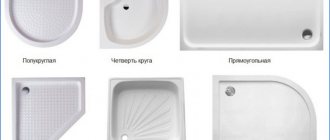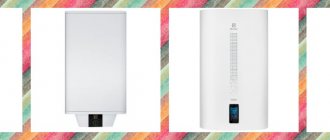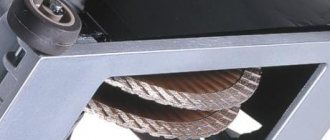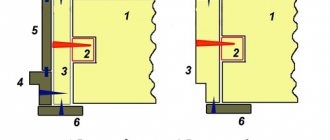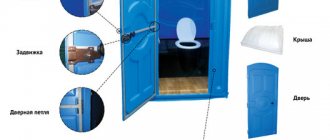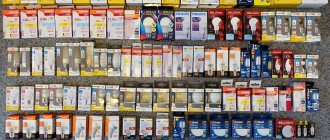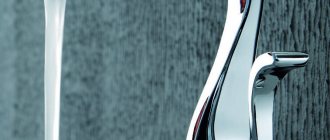A robot vacuum cleaner has long ceased to be considered an innovation and for many has become a familiar attribute of home appliances.
It’s convenient when someone cleans your apartment of trash without any reminders or scandals instead of you.
Modern design projects sometimes even mention the mandatory requirement for accessibility of cleaning using robot vacuum cleaners!
Just don’t forget that, first of all, this is a device for MAINTAINING cleanliness, and its presence in the apartment in no way eliminates the need for general cleaning.
Of course, your so-called accumulative garbage will disappear, but you still won’t be able to forget about the mop.
In this article we will look at how good models should differ from not so good ones, and what parameters should be emphasized first when purchasing.
Manufacturer
Which manufacturer should you choose?
Mistake #1
The manufacturer does not matter; the more expensive the device, the more effective it is.
Not really. There is a universal rule here that applies to other areas of our lives.
Really good vacuum cleaners come from SPECIALIZED robotics manufacturers.
Because a robot vacuum cleaner must first of all be a ROBOT. A striking example is the products of the company IRobot.
Here are typical reviews from real users.
Other well-known companies, which are famous primarily for their refrigerators, hobs or ovens, do not have the same level of resource base, experience and, most importantly, specialists in this particular field.
Yes, they also produce worthy specimens, but this does not make them the best. You are simply overpaying for the brand.
What it is?
Voice control of equipment implies that a person will be able to control the operation of the device and switch functions using voice commands. These commands can be initially written in the system, or you need to set them yourself by writing working scenarios. For robotic vacuum cleaners, this means that the owner of the device will have to clearly speak the command for the device to hear it and be able to interpret it correctly. Controlling the vacuum cleaner via voice commands makes it easier to complete household chores, especially if they are repeated day after day.
Power
How powerful should a robot vacuum cleaner be? In the characteristics you can find two values.
Mistake #2
Do not confuse power consumption with suction power.
Power consumption tells you how much electricity the device “eats” after each charge and how many kilowatts the electric meter will generate at the end of the month.
Mistake #3
There is no direct relationship here - the more powerful the device, the better the cleaning.
But suction power (or volumetric air flow rate) is a completely different matter. It is she who is responsible for how well the vacuum cleaner will draw in air and all the dust along with it.
The optimal value of suction power is 35-40 “aero” watts. 20-25W is still not enough.
In order to easily cope with wool and hair in rugs and carpets, more than 40 W will be required.
In some specifications, this parameter is indicated in Pascals. They show the inlet pressure drop.
- up to 1000 Pa – weak vacuum cleaner
He will no longer be able to get sugar or salt from the carpet. It won't even be able to clean the deep seams between the tiles and the laminate.
- 1500-1600 Pa is more or less an option
- 2000-2500 Pa – a good robot cleaner
Traditional giant vacuum cleaners have suction power from 200 to 500W. It would seem, what is a baby with 40W on board capable of?
And here, for some reason, everyone forgets about the height of the garbage lift. The fact is that a small “pancake” does not need to drive dust through a long corrugated tube.
Therefore, 40W will be more than enough for him to lift the debris a couple of centimeters from the floor and pull it inside.
Pros and cons of buying
Not all potential users will be happier after purchasing a robot vacuum cleaner - it may turn out to be another piece of furniture that reminds you of wasted money.
Pros of buying robot vacuum cleaners
It is important to understand that a robotic vacuum cleaner is unable to 100% relieve the owner from cleaning his home. It only simplifies daily care by picking up small debris in the dust collector or wiping the laminate/parquet/linoleum with a napkin.
Therefore, the unit will be very useful for a beloved grandmother or grandfather with disabilities - just give such a user a remote control or set a cleaning schedule.
Smart models of robotic vacuum cleaners are able to report on the work performed by sending a report to the owner. Which contains a map with marked areas where it was possible to clean up and where it was not.
Another argument is the presence of an animal in a fur coat. Even the shortest hair sheds and remains on the carpet, sofa or accumulates under the legs of the sofa/chair. To check out the best robot vacuum cleaners for carpets, please follow this link.
Among the advantages of buying a robot, the following should also be noted:
- its presence disciplines - owners get used to hiding wires, socks, children's toys, removing everything unnecessary from under their feet;
- a clean kitchen after the children have eaten - you can run a robot to collect crumbs from the floor in the kitchen, and this time can be spent on a more enjoyable activity;
- no need to take out the vacuum cleaner every day - just program the robot for daily cleaning, for example, while the owner is walking the pug;
- the cleaning time is reduced - weekly general cleaning is simplified, because almost clean rooms are easier to bring to a shine.
A robotic assistant can free up several hours a week that can be spent productively. Moreover, clumps of dust do not accumulate in the corners - the unit will regularly collect dust from the floor.
Arguments of opponents of such technology
Ardent opponents call the robot vacuum cleaner just a toy. They present a number of arguments against its purchase. Firstly, the high price . It’s hard to argue with this - indeed, not everyone can purchase household appliances for 40 thousand rubles or more.
There are also cheaper analogues that can make routine household tasks easier. In addition, the personal time of most working people is more expensive than a robot vacuum cleaner
Secondly, preparation of the area . There is a need to pre-clean the floor of small objects and wires. Some models can get tangled in cords or pull an iron, laptop, hair dryer and other small household appliances to the floor.
Thirdly, poor assembly and breakdowns . This is the problem with cheap robots coming from China. Many of them do not have a warranty or Russian-language instruction manual. Therefore, no one bears any obligations to the buyer.
To protect yourself from counterfeit or low-quality equipment, it is better not to be tempted by the low price tag - such vacuum cleaners may not meet the declared parameters or even break down in a week
Fourthly, possible problems with the quality of cleaning . Many opponents of robots retell the same story about cat/dog waste products smeared in a thin layer throughout the apartment.
Moreover, this counterargument is usually given by people who have not seen such vacuum cleaners with their own eyes. And thousands of cat/dog owners leave enthusiastic video reviews of their robotic equipment, and there is only one such story.
Moreover, it is not difficult to avoid an incident - you need to walk the animals in a timely manner, and fence off the feeding area or cat litter using a virtual wall.
Fifthly, a cluttered apartment . The modest dimensions of the room, where every centimeter matters and a maximum of useful furniture is squeezed in, is not the best place for a robot vacuum cleaner to live.
He will not be able to rearrange the furniture, and the area for cleaning will not justify the money spent on its purchase.
Owners of small apartments filled with furniture really do not need such equipment. And for large rooms with carpets and animals, you absolutely cannot buy cheap Chinese robots - they will not cope with such tasks
Shape - round or square?
All traditional models were originally round in shape.
Mistake #4
But many are sure that a round robot copes with its duties much worse than the newfangled D-shaped (square) vacuum cleaners.
Yes, indeed, the square one cleans the corners a little more efficiently. After it, the debris remains within a radius of no more than 1 cm from the inner corner. The round one is a little more than 2cm.
Here are the test results of three round robots and one square robot, carried out under ideal conditions (garbage scattered around the corners and edges in a closed rectangle).
D-robot won with an enviable advantage.
However, look around your rooms and wonder if the robot can reach those very corners? Most often they are filled with some kind of furniture, household items, battery pipes, etc.
Therefore, in 90% of cases, no robot will simply get there, which means there is no point in focusing on the square shape. In addition, round has a number of advantages:
- it is more passable
After driving into a corner, he does not need to back up to turn around.
- it hits objects less when turning
The effectiveness of cleaning in corners is solved in simpler ways:
- enlarged side brushes
- moving them to the front of the body
- more suction power
Brush type
Combination of a turbo brush and one side brush.
Image: irobot.by There are three options: brush brushes, turbo brushes and a combination of both types. The first ones are usually equipped with the most budget models, the rest are found in more expensive robots.
Brushes are only suitable for surface cleaning on hard surfaces - they only sweep away large debris, which is then sucked into the dust collector. When there are two brushes, they rotate towards each other and particles fall inside the vacuum cleaner. One brush does a much worse job and often scatters debris around the room.
The turbo brush is much more effective and is capable of cleaning carpets, rugs and other soft surfaces. It rotates quickly, raising the pile, and collects not only large debris, but also wool, hair and small particles.
Some vacuum cleaners have both types at the same time. This combination is more effective, but one turbo brush does a good job of cleaning.
Brushes
There are two types of brushes that the device uses to capture debris.
- lateral
- turbo brushes or suction hole
How many side brushes should a good robot vacuum cleaner have?
Mistake #5
The bigger, the better.
Not at all. Leading manufacturers usually limit themselves to just one! First of all, it is needed when cleaning along the baseboards and corners of the room.
Those who put two at a time explain this by the need to cover more of the area being cleaned in one pass. In fact, with good navigation this does not play a big role.
When moving with a snake, the surface is cleaned equally with both one and two brushes. The most important thing to pay attention to is the DESIGN of the side brushes.
Mistake #6
It's bad when the bristles occupy almost the entire length of the brush.
The fact is that such brushes turn out to be less elastic, quickly deform and begin to collect debris in the corners worse. The pile should occupy a maximum of half the length.
The best option for wear resistance is silicone five-ray ones.
Mistake #7
However, on smooth floors, they scatter debris more to the sides rather than sweeping it under themselves.
On carpets they are definitely inferior to pile.
Implementation
Very few models of robotic vacuum cleaners have their own technical capabilities to process received voice commands and interpret them correctly. For voice control, well-known voice assistants are used, such as Siri, Google Assistant, Amazon Alexa, and there are also vacuum cleaners that can work with Yandex.Alice. Almost the only exception from the list is Xiaomi, whose financial and technical capabilities allowed them to create their own assistant called Xiao AI. This means that the above assistants will not be supported, with the exception of the Siri assistant.
In the case of the mentioned vacuum cleaners, the Mi AI Speaker smart speaker is used, but most often all the necessary technical elements for recording voice commands are initially present in the vacuum cleaners. Since vacuum cleaners interact with voice assistants online, the vacuum cleaner must be connected to Wi-Fi for such control.
Different manufacturers implement voice control in different ways:
- To control Xiaomi vacuum cleaners with voice, the selected model must work on the Mijia smart home platform. The vacuum cleaner is configured through the original Mi Home application. To configure commands, you need to write the necessary scripts in the application. After this, you need to enter a key phrase, for example, start cleaning or turn off the device. If everything was done correctly, the desired voice control script will appear in the Quick Commands section.
- iRobot vacuum cleaners interact with Amazon Alexa voice assistant. The principle of creating working scenarios is similar to Xiaomi vacuum cleaner models.
- Vacuum cleaners from iClebo provide ways to work with assistants not only from foreign manufacturers, such as Google Assistant, Alexa, but also with the Yandex.Alice assistant. This means that vacuum cleaners will correctly recognize commands in Russian.
Turbo brush or rollers?
At the bottom in the middle of the robot body there is either an air suction hole or a turbo brush. She is the main cleaner.
The side brushes simply scatter and direct particles of debris in a given direction. All the main work is done by the central air intake or a roller with bristles.
The air intake is only suitable for working on hard floors - tiles, linoleum, parquet.
The roller is good at collecting garbage, pet hair and long hair on any surface. Even from your head if you accidentally fell asleep on the floor

